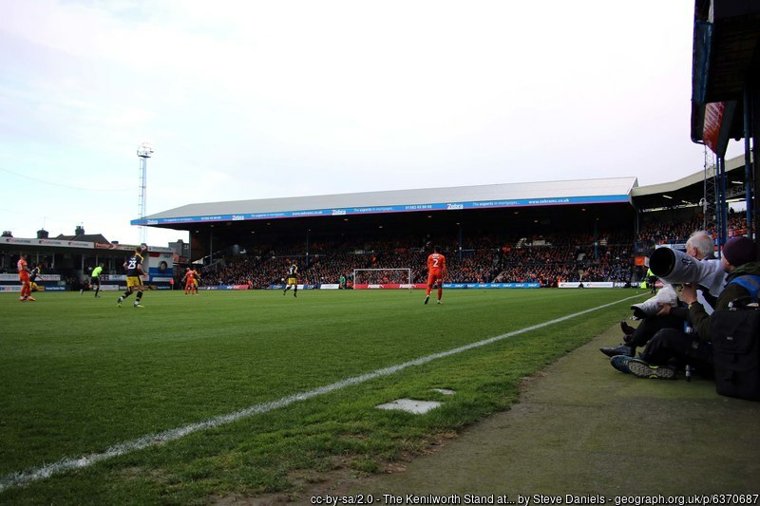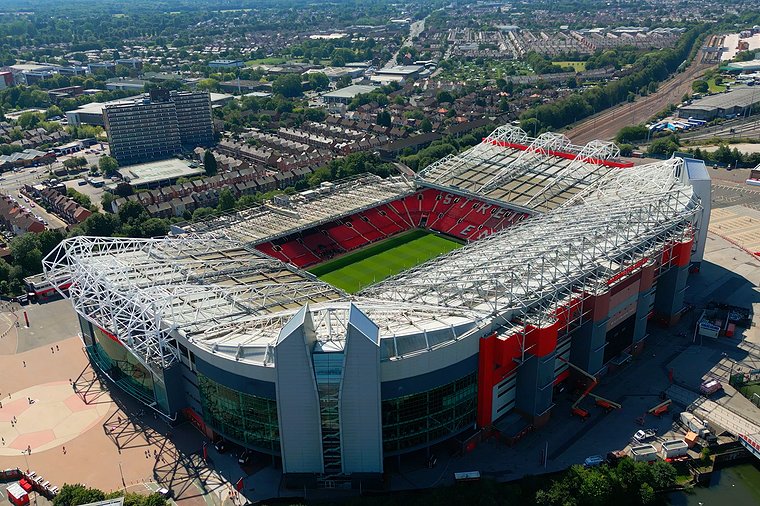The Premier League is undoubtedly the richest league in the world and it can certainly make strong claims to being the best. In addition, it is probably the most watched sports league in the world, with the PL’s global popularity playing a big part in its wealth. However, it also does very well in terms of live attendances too, with a number of the division’s top sides boasting large stadia that are regularly packed.
Many claim that the largest sports stadium in the world is the Narendra Modi in India, primarily used for cricket and with a capacity of 132,000. Perhaps the largest venue used for football is North Korea’s Rungrado 1st of May Stadium, although verifying anything about that highly secretive nation is tricky. Many would therefore argue that Barcelona’s Nou Camp, or Camp Nou if you prefer, is the biggest football ground anywhere, capable of holding around 99,000 supporters.
But how does that compare to the biggest grounds in the Premier League? How many fans cram inside Old Trafford, the Emirates or West Ham’s London Stadium? And what about the smallest grounds? At the other end of the spectrum, 2023/24 PL new boys Luton play in a tiny ground, but is it the smallest in the top flight and how does it compare to the rest?
Biggest 5 Grounds in the Premier League
Let’s take a look at the biggest five grounds in the Premier League in terms of their capacities. Many clubs have plans to expand their grounds, build wholly new facilities or are even already in the process of doing so. However, note that the following stats are based on the official Premier League website’s club stadia info as of the beginning of the 2023/24 campaign.
1) Old Trafford – 74,310
Man United fans may moan about Old Trafford, the so-called Theartre of Dreams, and it is true that the roof leaks, the facilities are poor and it needs serious investment. However, it remains the largest in the English top flight, despite the many far more impressive, modern stadia that have been built to rival it since its construction back in 1910.
The record Premier League attendance for the ground is 76,098 against Blackburn in 2007. However, the all-time record attendance is thought to be a shade higher, at 76,962. That came when standing was allowed but prior to many expansions, way back in 1939. Man United weren’t even playing, as the game in question was an FA Cup semi between Wolves and Grimsby.
2) Tottenham Hotspur Stadium – 62,850
Spurs’ ground is arguably the best in the Premier League and has wowed all who have visited since it opened in 2019. It was built on the same land as their former ground, White Hart Lane, the club playing at Wembley whilst the new stadium was constructed. It cost a massive £1bn to build, with work beginning in 2016 and it is a multi-sport venue. It has hosted top-class boxing, NFL games, rugby league and rugby union, as well as hosting many world-class musical acts.
3) Emirates Stadium – 60,704
Arsenal’s post-Highbury home comes in at number three and was built in 2006. The old ground of the Gunners held fewer than 40,000 and had limited facilities, especially in terms of hospitality. In contrast the new stadium has lavish and extensive corporate provision and overall holds over 50% more fans. This has been a big income-driver for the club and whilst many fans lamented leaving Highbury after almost 100 years, Arsenal are now well and truly settled at the Emirates.
4) London Stadium – 60,000
West Ham’s home since 2016, this ground was initially built for the 2012 London Olympics and was known as the Olympic Stadium. It has hosted several huge athletics meetings and remains a multi-purpose venue, but is primarily the home of the Hammers. The record PL attendance at the ground is 59,946 against Arsenal in 2019.
5) Etihad – 53,400
The second stadium on our list to be sponsored by an airline from the UAE has been Man City’s home since 2003, replacing the historic Maine Road. It was built to host the 2002 Commonwealth Games and technically remains the City of Manchester Stadium. The record PL attendance came in 2016 against Leicester, with almost 55,000 packing in, but capacity has been reduced a little since. There are plans to extend the ground further which could be finished by 2026.
Smallest Ground in the Premier League

The smallest ground in the Premier League in the 2023/24 campaign will be, of course, Luton’s. Kenilworth Road, or the Kenny to the locals, holds just 10,073 according to the latest Premier League data. Dating back to 1905 it is small, cramped and badly out of date, with limited facilities but, perhaps, the most famous entrance of any football ground in the world. To access the Oak Road End fans must pass through a row of terraced houses, the tunnel entrance built into the red-brick residencies.
Luton’s rise to the Premier League has been miraculous and whilst many expect their stay to be brief, they are already planning for the future. Mind you, plans to leave the Kenny have been around since the mid-1950s, although they do now have planning permission for a 23,000-capacity stadium that could be open within the next three years according to some reports.
Bournemouth’s Vitality Gives Luton a Run
The two smallest stadia to ever host Premier League games will do so in the 2023/24 campaign. Bournemouth, like Luton founded in the 19th century, play at the Vitality Stadum, though some fans may know it as either Dean Court or Goldsands. Built in 1910, the ground’s record PL attendance is a shade over the current official capacity. The former stands at 11,459 and the latter at 11,307.
These discrepancies between the smallest and largest stadia in the top flight have a big impact on the fortunes of clubs. Financially, even if we assume that tickets for the Emirates and Kenilworth Road cost the same flat £50 fee, the Gunners would bring in around £50m a year more than Luton from league games alone.
In reality the difference is greater as Arsenal’s tickets cost far more than £50 on average and they have so much more corporate hospitality. In addition, studies have shown that the bigger a stadium, the more marked home advantage is. Whatever the reasons for this, it clearly makes life in the Premier League all the more testing for the likes of Luton and Bournemouth.

